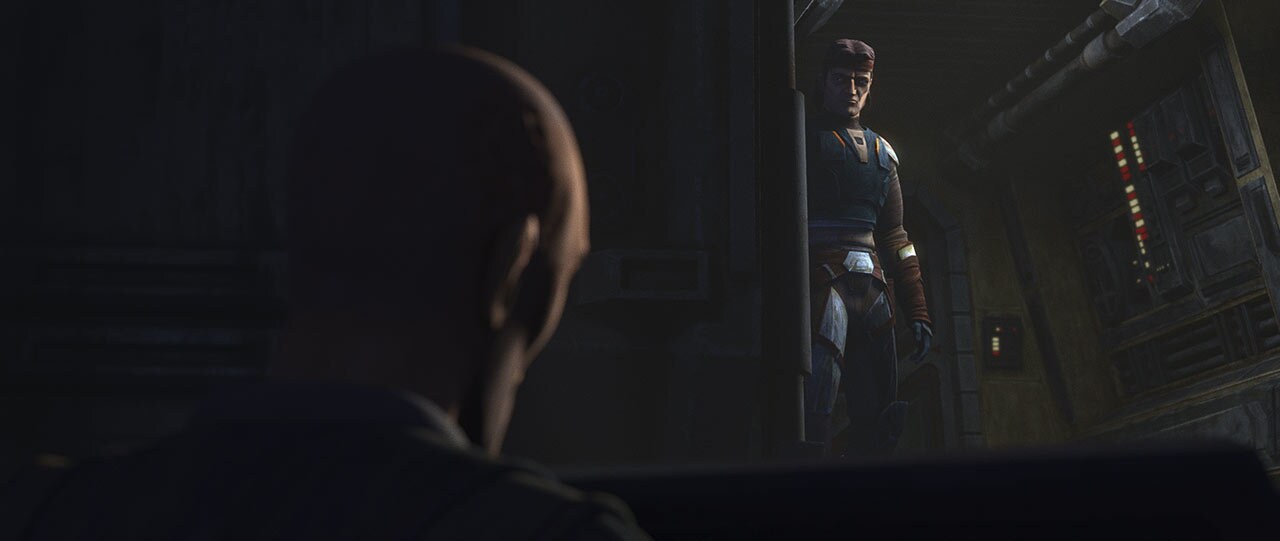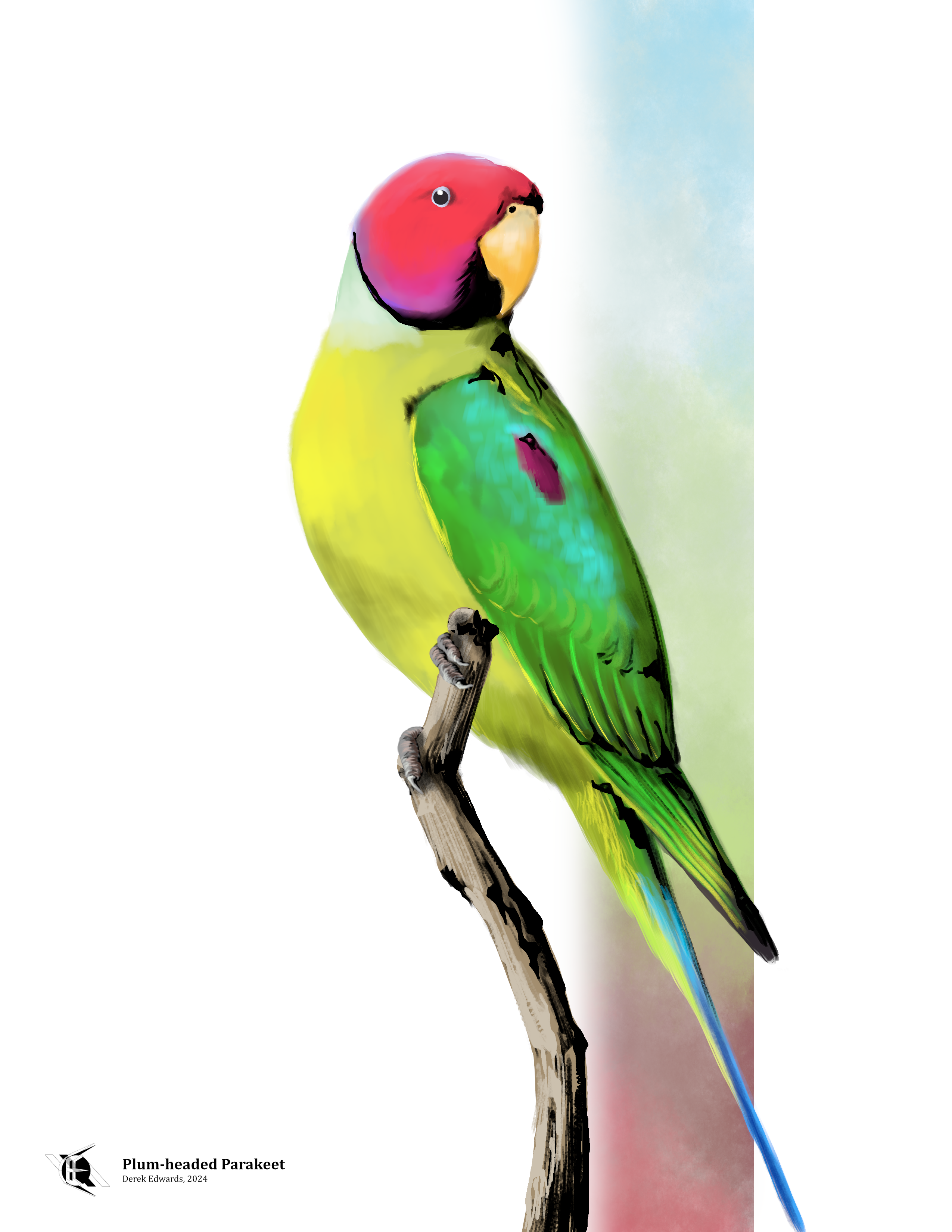
Running Commentary 3/11/2024
Hello,
I've been reading a bunch of Star Wars books, trying to get a better idea of whether The Crystal Star is really the worst one. Expect some brief reviews to come in the lead-up to "30 Years of Waru" this December.
Anyway...
Watching...

The Bad Batch
- This episode was fine, but felt a little...inefficient in its use of its running time. We got some discussion between Hunter and Crosshair, but much of the episode was dedicated either to fighting a big ice worm or to flipping switches. The data they find is just more detail about what they already know: there's a bunch of clones in Tantiss being experimented on. They still need to find Wayland. This season doesn't waste any episodes; everything we've seen so far has directly tied into the Tantiss story. But there's still 16 episodes this season, so, unless there's a big twist coming, we might be in for a slow ride.
- Speaking of Hunter and Crosshair: I feel like things resolved a little too cleanly, if things are resolved. Maybe they aren't quite. I did appreciate that Echo, who's, by now, dealt with a lot of regretful ex-Imperial clones, seemed most forgiving of Crosshair.
- Wrecker's lament that there's always some huge monster got me thinking: how often is there a big monster on this show? Certainly it's not an every-episode occurrence, but this is the second one this season. Last season had the robot giraffe thing, the Kashyyyk spiders, and a Zillo beast. Season 1 had a rancor and a swarm of giant killer bats. Altogether not too many, but yeah, enough for Wrecker to be sick of them by now.
- I liked how, once they were on Pabu, Omega went to learn sniping from Crosshair the way she's learned skills from her other brothers.

Bird of the Week
Have I mentioned that I hate doing parrots? It's not that I hate drawing them; parrots are very pretty, and also reasonably easy to draw, not commonly having patterns of intricate detail or notably glossy feathers.; the hardest thing is figuring out what to do with their long tails, which tend not to fit on the page. No, its that I hate writing about parrots. Mostly a given species isn't interesting enough to fill more than a paragraph or two. It's the same problem as with toucans: they're all pretty, but they're all pretty much the same. Once I've written about one of them, there's not much else I could say about the others.
But that hardly seems right, does it? Aren't parrots fascinating? They're kept as pets, can learn to talk, were on pirate ships (probably), are found all around the world, and have been part of human culture and folklore forever. Sure, the online search results for a given species might be clogged with pet care blogs, but that just means I need to do proper research to find something interesting. And find something interesting I have, about today's bird, the Plum-headed Parakeet.
First to get the dry facts out of the way: the plum-headed parakeet is an Asian parrot, found throughout India and Sri Lanka and in regions of other countries near the Indian border. They live in noisy flocks in wooded areas, including in human-dominated landscapes, and it feeds largely on fruit. Male plum-headed parakeets have a gradiated color to their heads, bright magenta in front turning to a purplish-blue toward their necks; females are solidly purplish-blue faced. Both sexes are otherwise bright green with long, slim blue tails with white tips (the tail is shorter than the yellow-tipped tail of the similar blossom-headed parakeet of Southeast Asia).1
Its striking beauty, friendliness, and gift for mimicry have made the plum-headed parakeet a popular pet.2 Keeping these birds has a long history going back to ancient times, as evidenced by its inclusion in the works of Ctesius of Cnidus, a fifth-century BC physician and historian. Ctesius was a member of the court of Artaxerxes Mnemon, a Persian king who ruled over the Achaemenid Empire, which stretched from modern-day Pakistan in the east to modern-day Libya in the west, though that rule was sometimes tenuous, which Artaxerxes found when his regional governors turned against him in an unsuccessful bid for independent rule.3 Ctesius wrote a history of the Persians, a work which, like many ancient histories, is not especially reliable and more an assemblage of locale tales compended for a Greek audience than a serious record of verified facts. Ctesius also wrote an even less reliable history of the Indus valley, a region on the Achaemenid frontier. He never visited the region himself, relying wholly on, at best, second-hand accounts from those who had. No copies of Ctesius's Indica survive; our only knowledge of its contents comes from passages quoted by later writers.4 His descriptions of several animals, at least, seem plausible, although occasionally they were misinterpreted. His description of the rhinocerous became the basis for the European notion of unicorns. But he did also include a description of a parrot with a red head, black chin, and blue body (the Greeks had no word for "green") that could speak the Indian language and, with teaching, the Greek.5 This was the earliest surviving account of a talking bird and was, based on the description, most likely an account of a plum-headed parakeet.6
To science, the plum-headed parakeet is Psitticula cyanocephala, or "little blue-headed parrot", 7 which suggests to me that it was named based on a female specimen. For some time the plum-headed and blossom-headed parakeets were considered to be the same species, with the latter bearing the sub-specific epithet rosa, meaning pink, which suggests that the blossom-headed parakeet (now Psitticula roseata, or "little pink (headed) parrot")7 was named based on a male specimen. The two species are, again, quite similar-looking, and since I didn't draw the bird's entire tail, my depiction could arguably be of either one.
- eBird. “Plum-headed Parakeet - eBird,” January 27, 2019. https://ebird.org/species/plhpar1.
- Kalhagen, Alyson. “Plum-Headed Parakeet: Bird Species Profile.” The Spruce Pets, March 21, 2020. https://www.thesprucepets.com/plum-headed-parakeets-as-pets-390269.
- Mark, Joshua J., and Bruce Allardice. “Artaxerxes II.” World History Encyclopedia, March 9, 2024. https://www.worldhistory.org/Artaxerxes_II/.
- Lendering, Jona. “Ctesias of Cnidus” n.d. Livius.org https://www.livius.org/articles/person/ctesias-of-cnidus/.
- Photius. trans. J. H. Freese. “Photius’ Excerpt of Ctesias’ Indica” n.d. Livius.org. https://www.livius.org/sources/content/ctesias-overview-of-the-works/photius-excerpt-of-ctesias-indica/.
- Bigwood, J. M. “Ctesias’ Parrot.” The Classical Quarterly 43, no. 1 (May 1, 1993): 321–27. https://doi.org/10.1017/s0009838800044396.
- Jobling, J. A. (editor). The Key to Scientific Names in Birds of the World (S. M. Billerman et al. editors), Cornell Laboratory of Ornithology, Ithaca.
Curation Links
The Great Washing Machine Scam | Aaron Britt, Craftsmanship Magazine
“Finding answers to life’s persistent questions—in this case, why are today’s washing machines more expensive but less reliable than yesterday’s?—requires an investigator willing to put some good, old-fashioned shoe leather on the case.”
Lost Highway | Emily Gogolak, Harper's Magazine
Gogolak’s account of her experience embedded in a class of prospective truckers. Trucking, once a hard but profitable life, is now mostly just a hard one, but there are still many who pursue a life on the open road.
The Big Fight Over 403 Very Small Wasps | Brooke Jarvis, WIRED
“The technique that Sharkey and his coauthors used, called DNA barcoding, is a way of quickly sorting and differentiating species...DNA barcoding is a common scientific tool these days. But some scientists said that Sharkey and his colleagues had pushed its use too far. They deemed the work “turbo taxonomy” or even, as the taxonomist Miles Zhang said, “taxonomic vandalism,” a term for labeling taxa as new without sufficient evidence for their uniqueness. These critics argued that the work could undermine the whole project of naming the natural world, of beginning to make it legible to human understanding.”
The Ballad of Maddog Quinn | Matt Inns, Short of the Week
[FICTION] [VIDEO] “Wanted and on the run, an infamous outlaw is pursued across the steam-powered dystopia of The State by a posse of relentless lawmen. In this desolate land of dust, rust and blood, there's not many problems that a fast horse and a gun can't solve, but things aren't always what they seem on the wild wasteland frontier. “ (15 minutes)
See the full archive of curations on Notion






Member Commentary